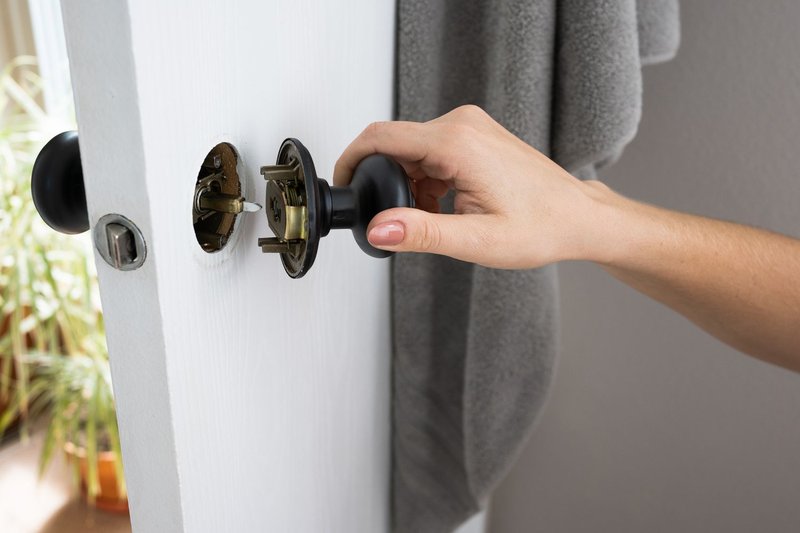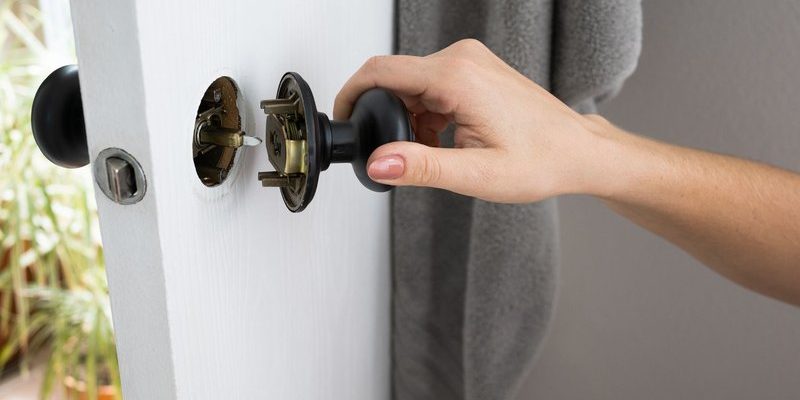
Picture this: You’ve got a beautiful front door that welcomes guests but now features a gaping hole where the knob used to be. If you have a standard door knob, like those from brands such as Schlage or Kwikset, the repair process is pretty similar across the board. Here’s everything you need to know to make that knob functional again.
Understanding the Door Knob Mechanics
Before diving into the repair, it helps to know a bit about how door knobs work. Most knobs are attached to a spindle—a long, metal rod that connects both sides of the knob. When you turn the knob, it rotates the spindle, which then disengages the latch inside the door. If the knob has snapped off the spindle, this connection is lost, and you can no longer open the door from that side.
You might be wondering why the knob broke in the first place. Often, it’s due to wear and tear or excessive force when turning the knob. Just like your favorite coffee mug can crack after years of use, so can your door hardware. Knowing this can help you take better care of your door knobs in the future.
Another point to note is the type of knob you have. Some knobs are designed with a press-fit connection while others may be screwed on. Identifying your knob type is crucial since it can affect how you approach the repair.
Gather Your Tools
Before you start fixing that snapped door knob, gather the right tools. Here’s a basic list of what you might need:
- Screwdriver: Typically, a Phillips head will do.
- Replacement spindle: If the original is broken, you’ll need a new one.
- Door knob set: Sometimes it’s easier to replace the whole set if parts are too damaged.
- Allen wrench: For knobs that use this type of fastener.
- Measuring tape: To check the fitting dimensions if you’re buying new parts.
Having your tools ready makes the process smoother. You wouldn’t want to be halfway through the repair and discover you’re missing that one tiny screwdriver, right?
Remove the Door Knob
With your tools in hand, the next step is to remove the broken knob. Start by locating the screws holding the knob in place. If you see visible screws, use your screwdriver to take them out. If there are no visible screws, look for a small hole or flat side of the knob. Many knobs have a hidden set screw, which is where that Allen wrench will come in handy.
Once the screws are removed, gently pull the two knob halves apart. This might require a bit of wiggling. If you feel resistance, check if you’ve missed a screw or fastener. Don’t force it; you risk damaging the door further.
Here’s a quick tip: If the spindle is still attached to one of the knobs, make sure to remove that as well. You want a clean slate for your repairs.
Inspect and Replace the Spindle
Now it’s time to evaluate the damage. If the spindle itself is broken, you’ll need to replace it. Take a good look at the hardware you removed; there may be a part number or brand name that can guide you in finding a matching spindle.
Once you have your new spindle, align it with the knob holes on both sides of the door. Make sure it fits snugly but doesn’t require excessive force to insert. If the fit feels wrong, double-check your measurements against the original spindle.
Installing the new spindle: Insert the spindle through the door and make sure it extends equally on both sides. This is crucial for the knob to turn properly.
Reattach the Door Knob
With the new spindle in place, it’s time to reattach the knob. Start by positioning one half of the knob onto the spindle, pushing it firmly against the door. Secure it with screws if they’re provided, tightening them gently but firmly. You don’t want to overtighten and risk damaging the knob.
Once one side is secured, repeat the same process for the other half. Double-check that everything spins smoothly before you finish up. If it’s wobbly or feels loose, adjustments may be necessary.
Test Your Repair
Now that everything is back in place, it’s time to test your handiwork. Gently turn the knob to see if it engages the latch as it should. If it feels right, you can close the door and check if it locks properly.
If everything works smoothly, congratulations! You’ve just saved yourself a trip to the hardware store or a call to a locksmith. If not, double-check your installation. Sometimes, the simplest fixes can be overlooked.
Prevent Future Breakdowns
Having dealt with a snapped door knob, you might be wondering how to prevent this from happening again. Here are some tips:
- Regular Maintenance: Inspect your door knobs every few months. Tighten loose screws and check for wear.
- Use Gently: Avoid using excessive force when turning the knob, especially if it feels sticky.
- Consider Upgrading: If your door knobs are older, upgrading to a sturdier model can save future headaches.
By taking these preventative measures, you can extend the life of your door knobs and avoid unexpected surprises.
When to Call a Professional
Sometimes, despite our best efforts, repairs don’t go as planned. If your knob continues to malfunction after attempting a fix, or if the latch itself seems broken, it might be time to call in a professional. This ensures that you won’t accidentally create bigger issues or security concerns.
Remember, while DIY repairs can be rewarding, there’s no shame in seeking help when needed. It’s all about keeping your home safe and functional.
In summary, fixing a door knob that snapped off the spindle isn’t as daunting as it seems. With a little time and the right tools, you can have your door working like new. Next time you grab that knob, you’ll feel a little prouder that you tackled the problem head-on!
